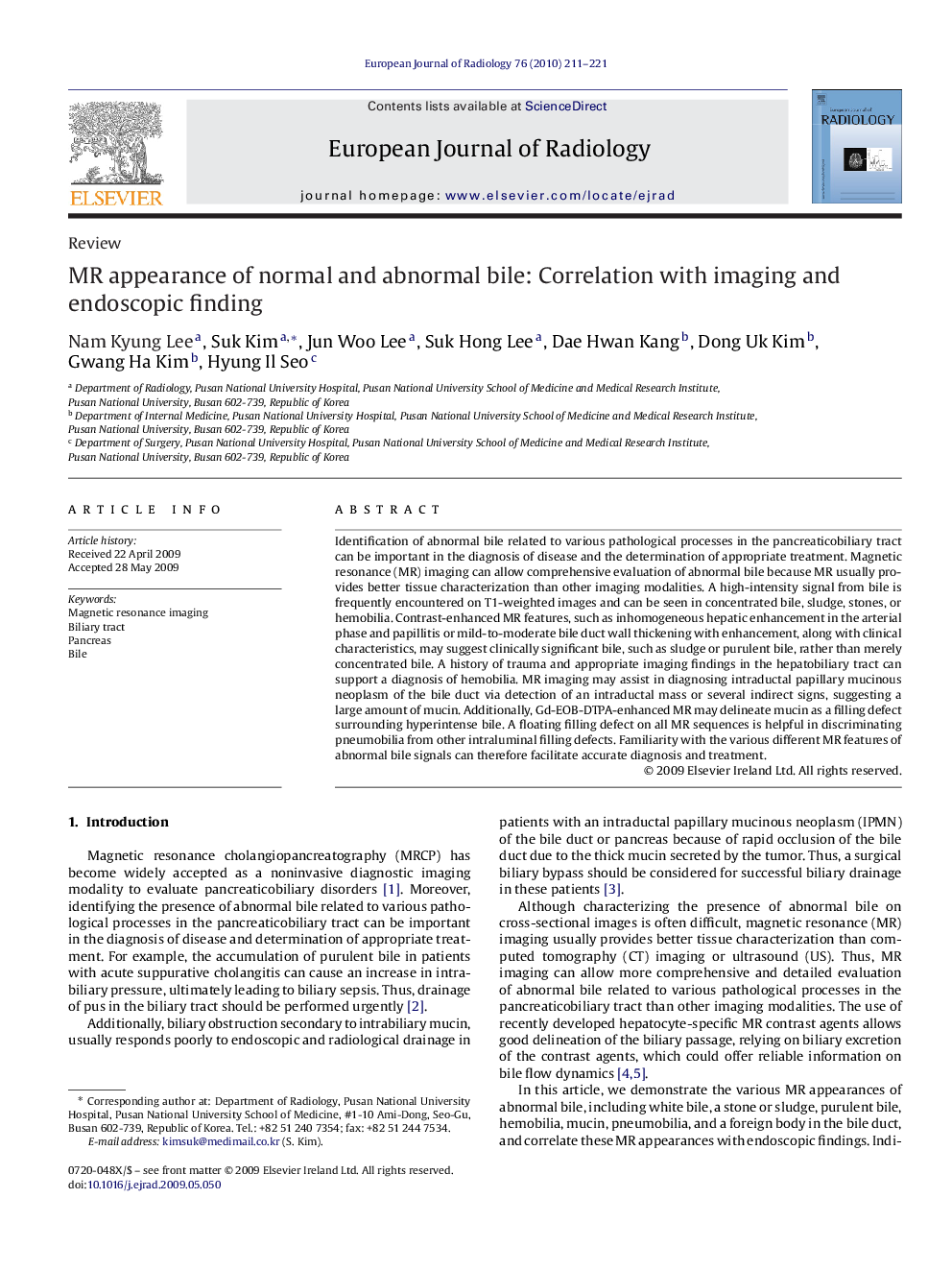| Article ID | Journal | Published Year | Pages | File Type |
|---|---|---|---|---|
| 4227200 | European Journal of Radiology | 2010 | 11 Pages |
Identification of abnormal bile related to various pathological processes in the pancreaticobiliary tract can be important in the diagnosis of disease and the determination of appropriate treatment. Magnetic resonance (MR) imaging can allow comprehensive evaluation of abnormal bile because MR usually provides better tissue characterization than other imaging modalities. A high-intensity signal from bile is frequently encountered on T1-weighted images and can be seen in concentrated bile, sludge, stones, or hemobilia. Contrast-enhanced MR features, such as inhomogeneous hepatic enhancement in the arterial phase and papillitis or mild-to-moderate bile duct wall thickening with enhancement, along with clinical characteristics, may suggest clinically significant bile, such as sludge or purulent bile, rather than merely concentrated bile. A history of trauma and appropriate imaging findings in the hepatobiliary tract can support a diagnosis of hemobilia. MR imaging may assist in diagnosing intraductal papillary mucinous neoplasm of the bile duct via detection of an intraductal mass or several indirect signs, suggesting a large amount of mucin. Additionally, Gd-EOB-DTPA-enhanced MR may delineate mucin as a filling defect surrounding hyperintense bile. A floating filling defect on all MR sequences is helpful in discriminating pneumobilia from other intraluminal filling defects. Familiarity with the various different MR features of abnormal bile signals can therefore facilitate accurate diagnosis and treatment.
